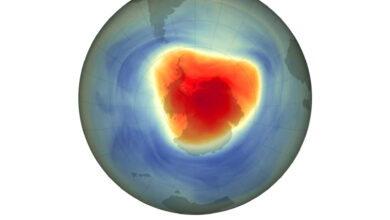
Venus is the closest neighbor to Mercury. Although Jupiter has at least 95 moons, neither of the two inner planets of the Solar System has a single moon to accompany them in their orbit around the Sun.
Mercury is too close to the Sun to have a moon. In fact, even possible moons either collide with the surface of Mercury or are ejected from its orbit by the Sun. However, the question still arises as to why the planet Venus has not trapped any moon, or at least at some point in time it has no moon that it has lost now.
Moons are formed in three ways. One method is gravity trapping. According to scientists, Neptune got its biggest moon, Triton, in this way. Joe Reno, a planetary scientist at NASA, says Triton has a strange orbit that makes us think it was a Kuiper Belt dwarf planet, just like Pluto.
Another method is “simultaneous formation” in which the planet and its moon form at the same time. Jupiter’s Galilean moons appear to have formed from a massive dust disk that Jupiter absorbed from gas and dust around the Sun early in the history of the Solar System. The material in this disk formed small moons that eventually stuck together to form Jupiter’s largest moons, Io, Europa, Ganymede, and Callisto.
The third method is massive collision. Earth’s moon was probably formed 4.5 billion years ago during a collision between the protoplanet Theia and the planet Earth. During this collision, enough material was ejected from the Earth’s surface to form the Moon.
The planet Venus has a mass equal to 80% of the mass of the Earth, so we can expect it to have acquired a moon in the last method or by the method of “simultaneous formation”. It is not yet clear how Venus escaped the chaos of the early solar system.
Researchers who study the lack of moons of Venus and the strange rotation of this planet, say that according to the existing theories about the formation of the solar system, it is unlikely that Venus could have avoided such large collisions. According to the simulations, most large collisions create a disk from which a moon forms.
The prevailing hypothesis for the absence of a moon around Venus is that this planet is too close to the Sun. However, there is also the theory that Venus was subjected to collisions in the early history of the solar system and the pebbles resulting from this collision formed a moon. This moon was once associated with Venus and slowly escaped from it. A second impact could then reverse Venus’ rotation, causing the lost moon to return to Venus through gravitational forces, the researchers said.
Although the above hypothesis can explain the strange rotation of Venus, it still does not explain why Venus does not have moons. More observations can help solve this mystery. It is hoped that the Venus probe Veritas, scheduled for launch in the 2030s, will be able to collect the data needed to solve the mystery.









